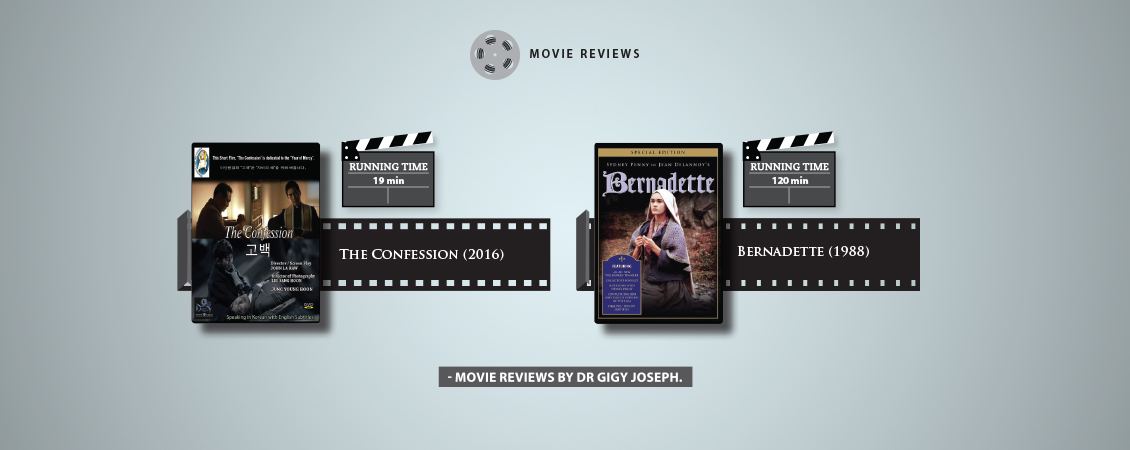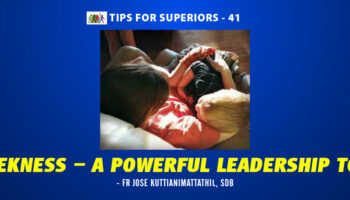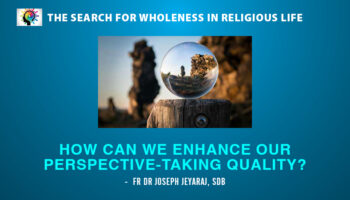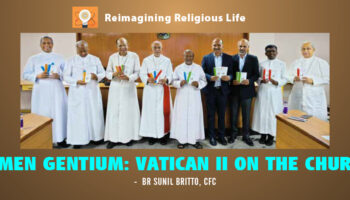The Confession
Director: John La Raw. Actors: Jung Young Hoon, Gang Jong Sung, Park Jun Hyoung, Go Eun Gyeol, Kim do Hyoung. 2016. Running time: 19 minutes
This South Korean movie, which won the Best Short Film at the International Catholic Film Festival, focuses on what happens in a confessional. It delivers a thought-provoking and powerful message. The scene is a confessional in a South Korean Catholic church. The young priest is hearing the confession of a sick, elderly man. The penitent begins to tell of a terrible crime he had committed twenty years before. He feels that he would be facing death soon and wants to seek forgiveness from the victim’s family and also desires to go to the police. As the details of the story come out, the young priest realises that the penitent is the killer of his own father! He recalls the hit-and-run incident in which, as a little boy, he had witnessed his father run over by a drunken driver. It had been the most traumatic experience of his life. Completely upset, he asks the man why he had not informed the police or taken the victim to a hospital. The man is shaken up and admits his cowardice in dodging the law and being callous.
The man faints when he realises that his victim had been the confessor’s own father. The priest gets out of the confessional to attend to the man and gets back to the chapel, where he struggles with his own agony, torn between forgiveness and anger. Tearfully he recites “Our father” on his knees. The face of the tortured Jesus rises before his eyes. The prayer has a new meaning for him now. He must forgive before God does. Outside the confessional, he goes to the shattered old man and assures him that he has forgiven. The penitent must forgive himself. The young priest now feels that he must console the old man. He tells him a “white lie” to console him, namely, that his father had actually survived and died only three years back. In the closing sequence, we see him holding his father’s youthful picture saying that he knows that a priest should not tell a lie. But he hopes that his father’s soul would forgive him since he was acting out of mercy for a guilt-ridden soul.
——————————————————————————————————————————————————————-
Bernadette
Director: Jean Delannoy. Actors: Sydney Penny, Roland Lessafire, Michelle Simonet Bernard Dheran Dalou. 1988. 120 minutes
This award-winning film by the prominent filmmaker Delannoy traces the history of St Bernadette Soubirous who had visions of Our Lady in1858. The story begins in 1857 with the poverty-stricken but happy family of the Soubirous move to the south-western France, in the Pyrenees. Bernadette’s mother works as a washerwoman and her father is a casual labourer. The eldest of five siblings, Bernadette was sick, illiterate and deeply devout. In February 1858, when she was fourteen, while collecting firewood near a grotto called Massabielle in the company of her sisters, Bernadette sees a light inside the cave and the figure of a beautiful young woman. This is the beginning of a series of apparitions and messages. Bernadette’s mother is alarmed. The church authorities are initially sceptical and think Bernadette is hallucinating. The civil authorities turn their wrath on her. As the news spreads, the government tries to prevent the gathering of the devout. The crowd around Bernadette during the apparitions sees her wonderfully transformed. But only she sees the figure of the lady. She receives several messages, the chief of which is ‘penance.’ Doctors examine her for normalcy. The police prefect interrogates her and forbids her to visit the grotto. Bernadette never says it is Our Lady, since the apparition did not reveal her name. Only the poor people in the town believe it to be the Virgin. The local physician comes to her defence clearing her of allegations of insanity. Guards prevent people from collecting the water of the miraculous spring. But when Emperor Luis Napoleon’s infant son is cured of a mortal illness, the ban is lifted. Bernadette, tired of all the public attention, seeks refuge in a convent and later becomes a nun. Ecclesiastical authorities ratify the veracity of her visions and a chapel is built in Lourdes. The film closes with a report of Bernadette’s death on 16th April 1879 and her canonisation in 1933. Her exhumed body was found uncorrupted and is preserved in Nevers, France.
To read the entire article, click Subscribe






